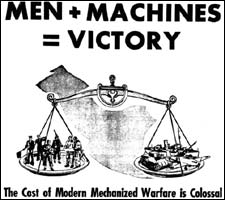By 1944 taxes had reached unprecedented levels and were bringing in approximately one-half of the revenue of the Canadian government. The balance was raised through the sale of War Savings Certificates and Stamps on a continuing basis, and through Victory Bonds at set periods. Working in conjunction with government to encourage citizens to save and invest were the ten chartered banks who had extensive functions related to the wartime economy.
The government also organized special fundraising in 1941 to support the work of six war service organizations. The campaign was so successful that there was enough money to support the program until the end of the war.
The general theme of money can be explored through four sub-sections: War Savings Stamps and Certificates, Victory Loans, War Services Fund, and Banks.
| Related Articles | Related Images | Related Memories | Related Websites | Inflation Calculator |
| Home Page | Site Map | Contact Us | Wyatt Heritage Properties |





